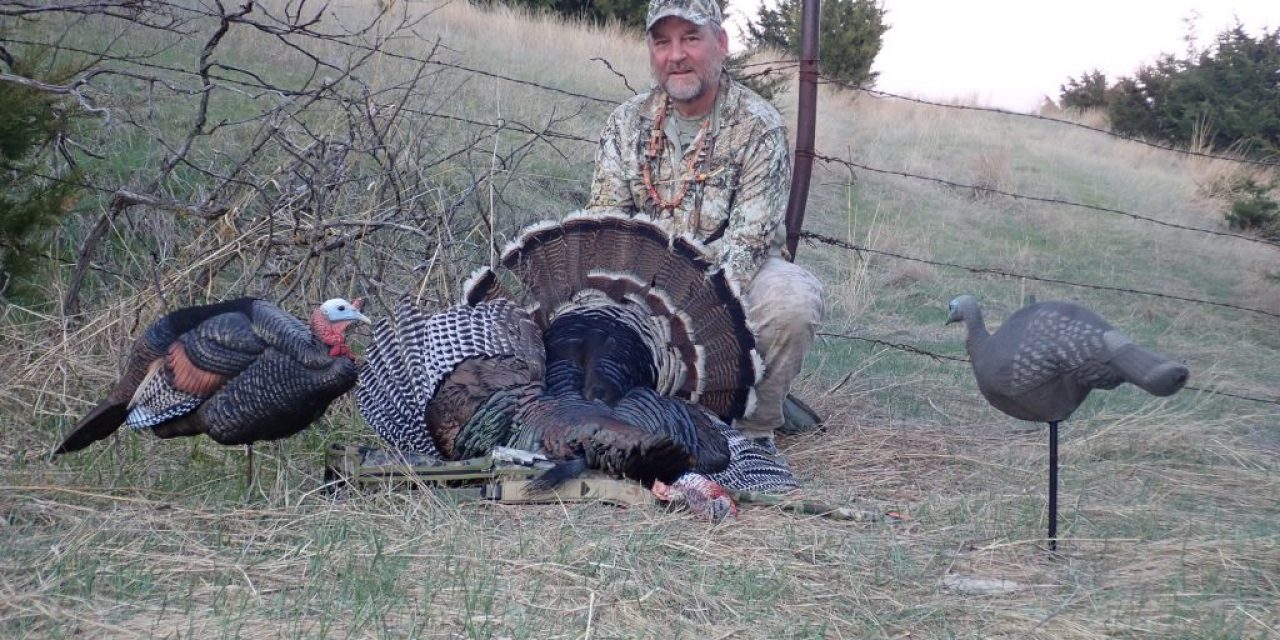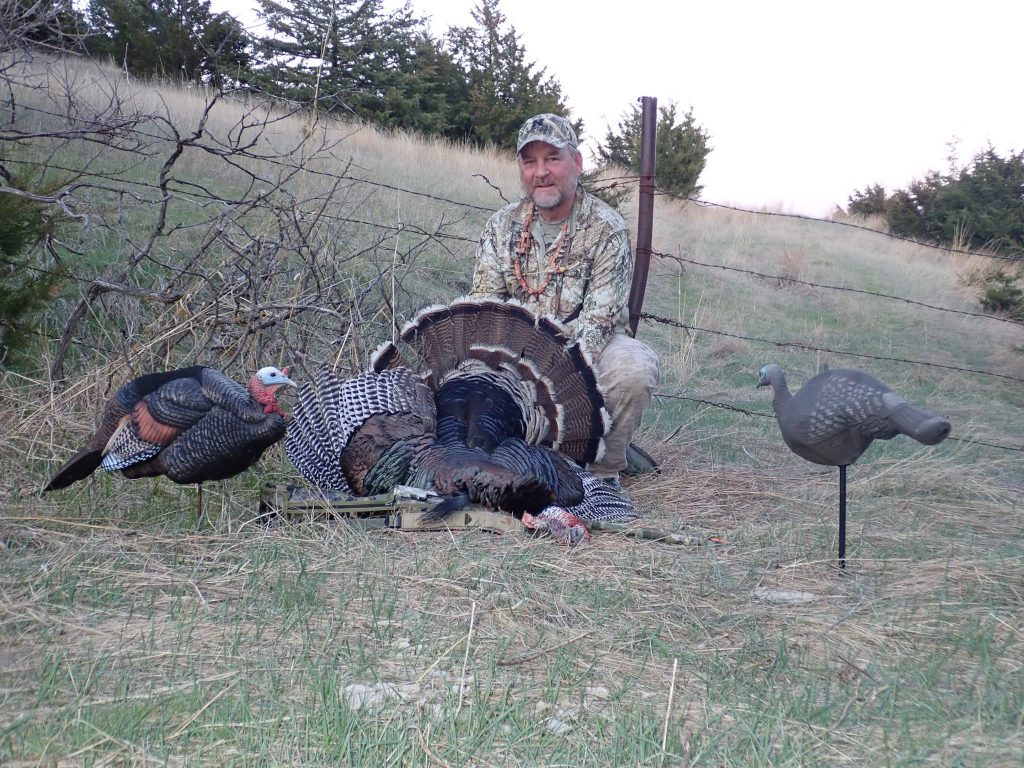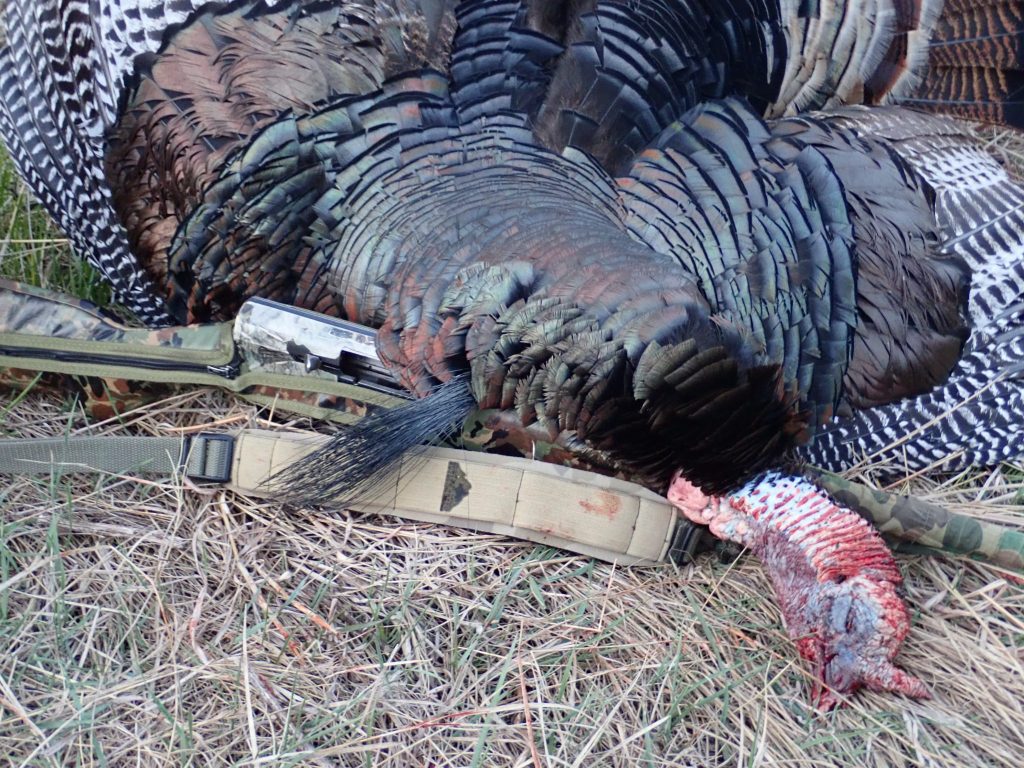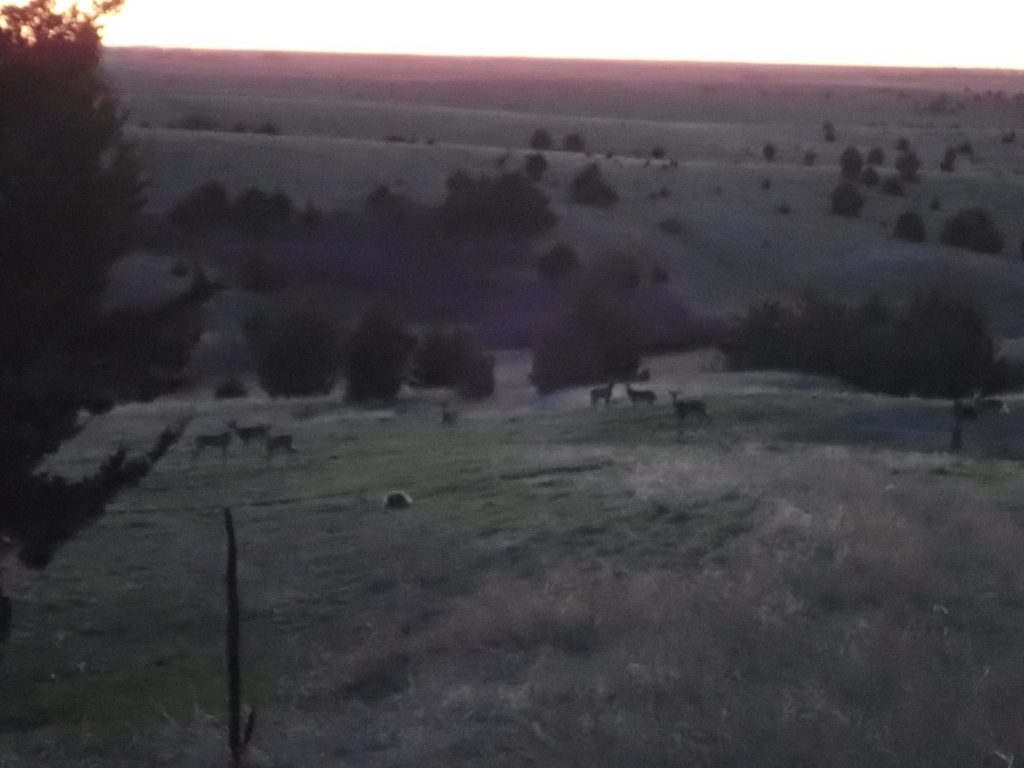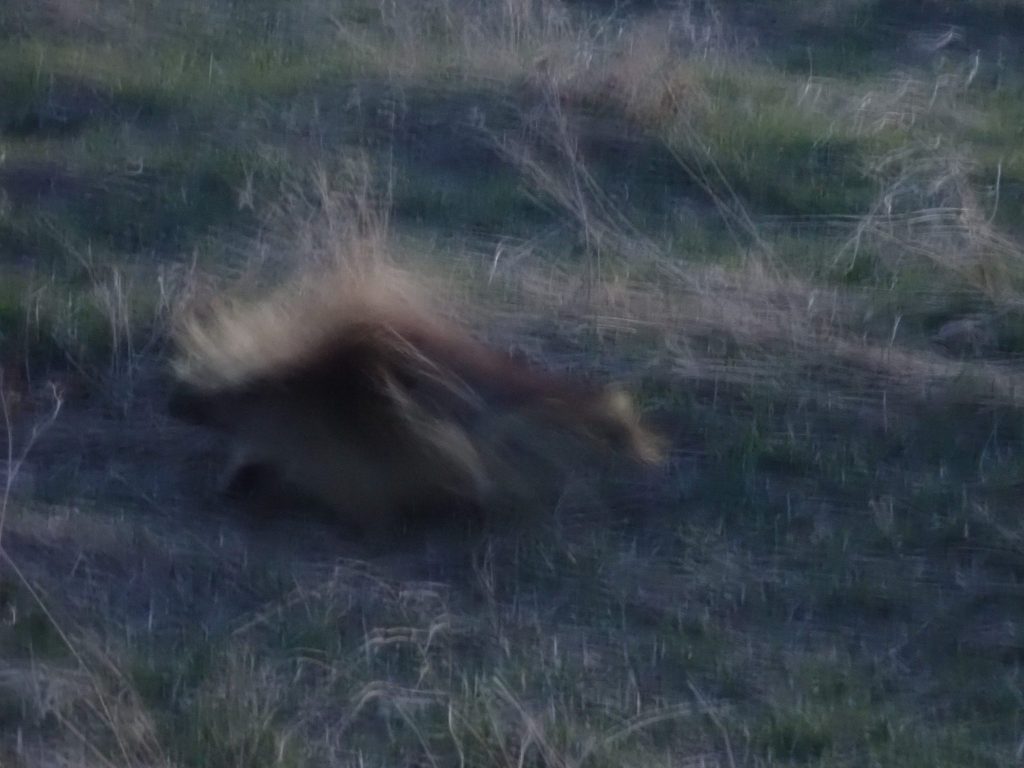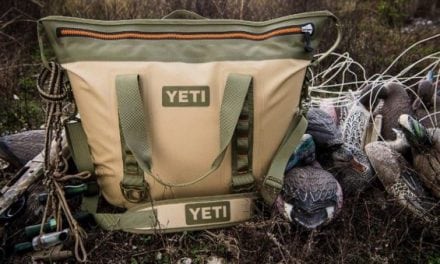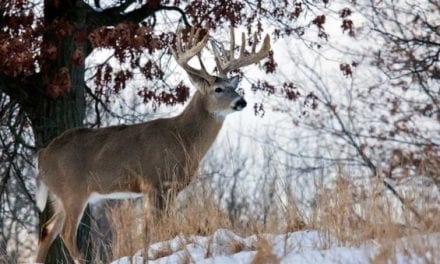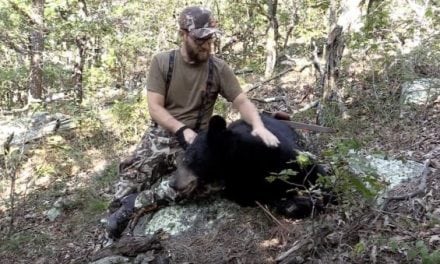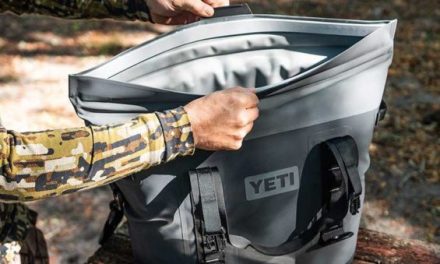As promised, I have been trying to spend as little time in the office as possible. Slipped out west for some family celebrations a while back, and while I was out there managed to sneak away for some quiet time with the turkeys.
I grew up in North Platte and in those younger days spent a lot of time roaming the loess canyons southeast of town. I am old enough to tell you that back then there were no turkeys in those cedar canyons, lots of mule and whitetail deer, coyotes and bobcats, but no turkeys. If we wanted to hunt turkeys we ventured north to the Ponderosa pine canyons flanking the Niobrara River. I never dreamed that the loess canyons of southwest Nebraska would one day host the numbers of turkeys it now does. Talk about a wildlife management success story! It is wild, mostly uninhabited country with gobbles ringing from the ridge tops and canyon bottoms. Hunting there is physically challenging and I ain’t young anymore, but I love it.
I ventured out to some familiar ground for a quick hunt the evening we got into town. Being able to hunt the same areas over the years is a huge advantage. Sure, there are always differences from year to year, but experience has shown which areas tend to hold birds. A person for sure cannot punch any tags sitting at home on the couch, but by hunting familiar areas even a quick hunt can be successful.
Another thing I have learned is that many times the birds are not far from where the pickup is parked–best to start hunting as soon as the tailgate is quietly closed. I took my time working up along the first ridge, careful to look and listen and not bumble along spooking birds. Within minutes I spotted some deer on a patch of green grass, knew there should be some turkeys using that spot too. Not very long after that I spied the first turkeys on the next ridge over; they were toms, looked like jakes and I had an idea where they were heading.
I was not necessarily going to harvest a jake, but I figured if there were some jakes heading to a certain canyon bottom there likely would be a bunch of other turkeys heading there too, and probably a couple of big toms with beards so long they were tripping over them. Only problem was I was hunting when I had time, and was already too late to get to that spot before the birds got there. If I headed there then, all I was going to do was bump into birds and scare them.
But I knew another place, just above that canyon bottom, where a person might be able to call a bird before it headed to roost. There was a big ole cedar tree there, a perfect blind where my butt has sat before. I walked the few hundred yards down there, put out a couple of decoys and slipped the diaphragm call into my mouth before I sat down. When I started yelping, I was immediately answered by a hen yelping back, and then another, and another, and then there was turkey music of all kinds coming from the canyon bottom just below me!
My strategy with calling is to mimic the birds, if they want to call a lot, so will I. Knowing that the toms are often following hens, at least until later in the spring, I would just as soon start up a conversation with a mouthy, ole hen as a tom gobbling his head off. Call in a hen or three and usually there will be a big tom following. So, for twenty minutes I was in a turkey calling contest. . . . I would yelp and several hens would yelp back, if they would answer me, I would call again, and then a couple of gobbles came floating up my way, and then I could hear turkeys carrying on fighting and chasing each other.
I figured there would be a bunch of turkeys in that canyon bottom below me, and from the sounds of it, there were!
The calling contest waned after a bit, and I knew that most of the birds answering me were not going to come my way. They were merely standing down there conversing in Turkese with me. But I was hoping there might be a tom come sneaking up to check out my calling. “Patience”.
Watched a couple more deer, and occasionally called. It was a beautiful evening. Glance at my watch, still plenty of time left until sunset, but if there were going to be any turkeys come my way, it would be soon. . . .
And then, there he was, a big, red head walking up the trail out of the canyon! “Figured I could pull a tom away! Long beard, mature bird, you bet, if he keeps coming, I will take him!”
Then there was another red head, and another, and another, in single-file they just kept coming! I quit counting at six, how many toms came walking up out of the canyon to me I could not tell you for sure. I was focused on the first one because he had a long beard. I believe the others were all jakes, but honestly, I do not know, I was not paying attention. The first bird, the big one, was crossing under the barbed wire fence in front of me and he was going to be in range!
He crossed and then angled up the hillside to my left. He was in range, but looking out from under the cedar tree where I was sitting, there was no way to take a shot through the branches. “NOOOOooooo, they are all going to walk by me!”
I mentioned I was using a mouth call. I love mouth calls. With practice you can make every sound a turkey makes on a diaphragm call. Best of all, in a situation just like this, you can call without moving. I yelped softly. The big Tom stopped, looked, then came marching straight down the hill right to my jake decoy. The jake decoy that was sitting a mere 10 yards in front of me.
At that point it was just a matter of putting the bead on his head and squeezing the trigger. He never strutted, but while posturing next to the decoy I got the sights on him and tipped him over on his chin.
Let me make a couple of comments, first about the photo. Pictures taken in the field, on the spot, are best. Yes, I carry a small camera with me all the time, and anymore, who does not have access to that, or a smart phone? Take ’em along and take pictures then and there. In the photo, the view back over my shoulder is right where that Tom and all his buddies came walking up and to me. I will never forget that view in my mind and every time I stare at the photo I will remember that.
Secondly, I am non-traditional in a lot of ways, including camouflage. I hate most of the camo patterns that stock sporting goods racks for spring turkey season. If all I ever did was plop my butt down in front of some oak tree someplace, the mostly green and gray, leafy, tree bark, “real tree”-type popular camo patterns would be just fine. But, I have hunted over a large part of Nebraska and those patterns don’t blend in with nothing on a grassy hillside, in front of a soapweed, or snuggled in under a cedar tree. They don’t even match a cottonwood trunk very well. Instead those camo patterns become a gray blob that in fact stands out instead of blends in. I try to buy patterns that are much lighter in color, I want more tans and light browns and far less grays. I want more grass and no tree bark. Some of the patterns marketed for more “western” terrains are better, but still many of them are too dark. If I could buy nothing more than old, brown, WWII camo I would be happy. Take a look at what I am wearing in the photo, and then look at the background, see what I mean?
You turkey hunters will want the particulars, a beard just short of 9 inches.
My son and I have killed birds that weighed more than 20 pounds in those cedar canyons, but on average the toms tend to be a little lighter. It is rough country and they do not necessarily fatten-up on corn as much. This one was a relative light-weight for a mature tom at only 16.7 pounds!
But he had hooks!

I was hiking back up to the ridge top just after sunset. You know, taking your time walking back with the weight of a Tom on your back has to be one of the most satisfying feelings in the world!
I mentioned the patch of green grass earlier in my story, well I topped out just above that patch on the walk back, and there was a party going on back there! The photo is blurry, but you will get the idea. There were a dozen or two deer feeding on that green grass and two porcupines!
I got it in my head to get some pictures of the porkies. They do not move fast, definitely waddle, but in the low light they were fast enough to keep me from getting a good photo!
Several more were shots of the south end of a north-bound porcupine!
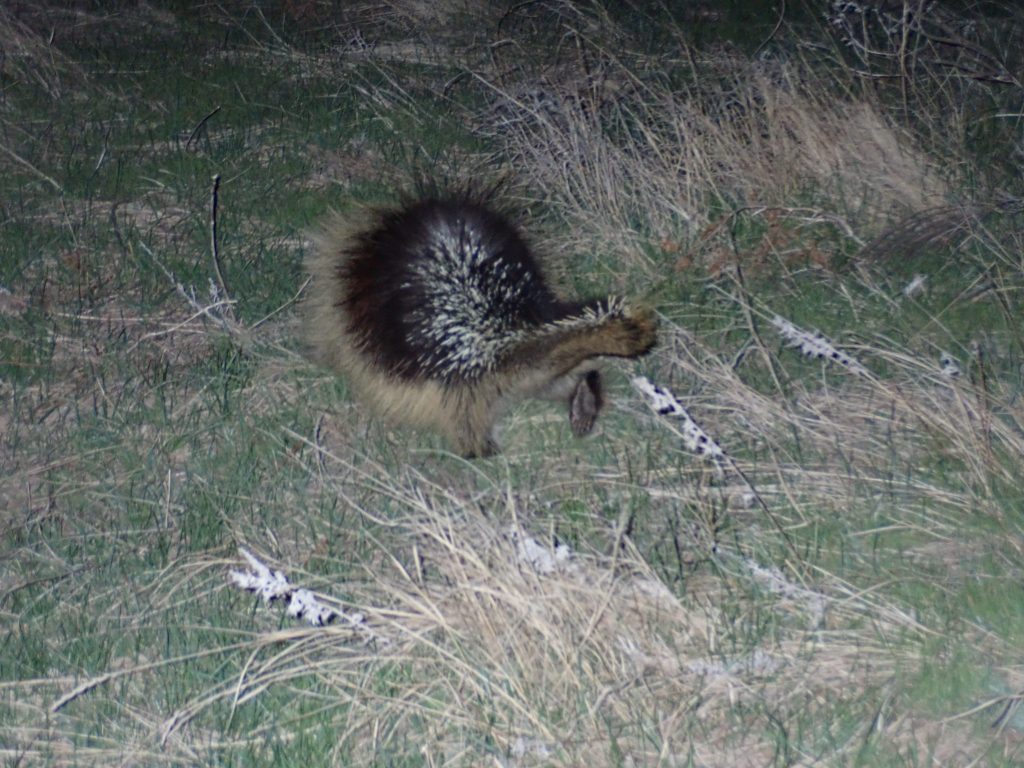
Finally, a better shot.
We spent a lot of time with family over the next couple of days, but even though we did not have another turkey permit to fill, we could not resist spending some more time back out in those canyons watching and listening to turkeys. I have often said that the key to a successful spring turkey hunt is scouting, scouting, more scouting and then some scouting. Sometimes we even scout after we have filled our tags! That tells you what it is really all about–spending time in the field in the spring, enjoying each other’s company, and enjoying the activities and antics of those big beautiful birds! Oh, and the rest of the critters are really cool too!
The post Turkey Down! appeared first on Nebraskaland Magazine.

